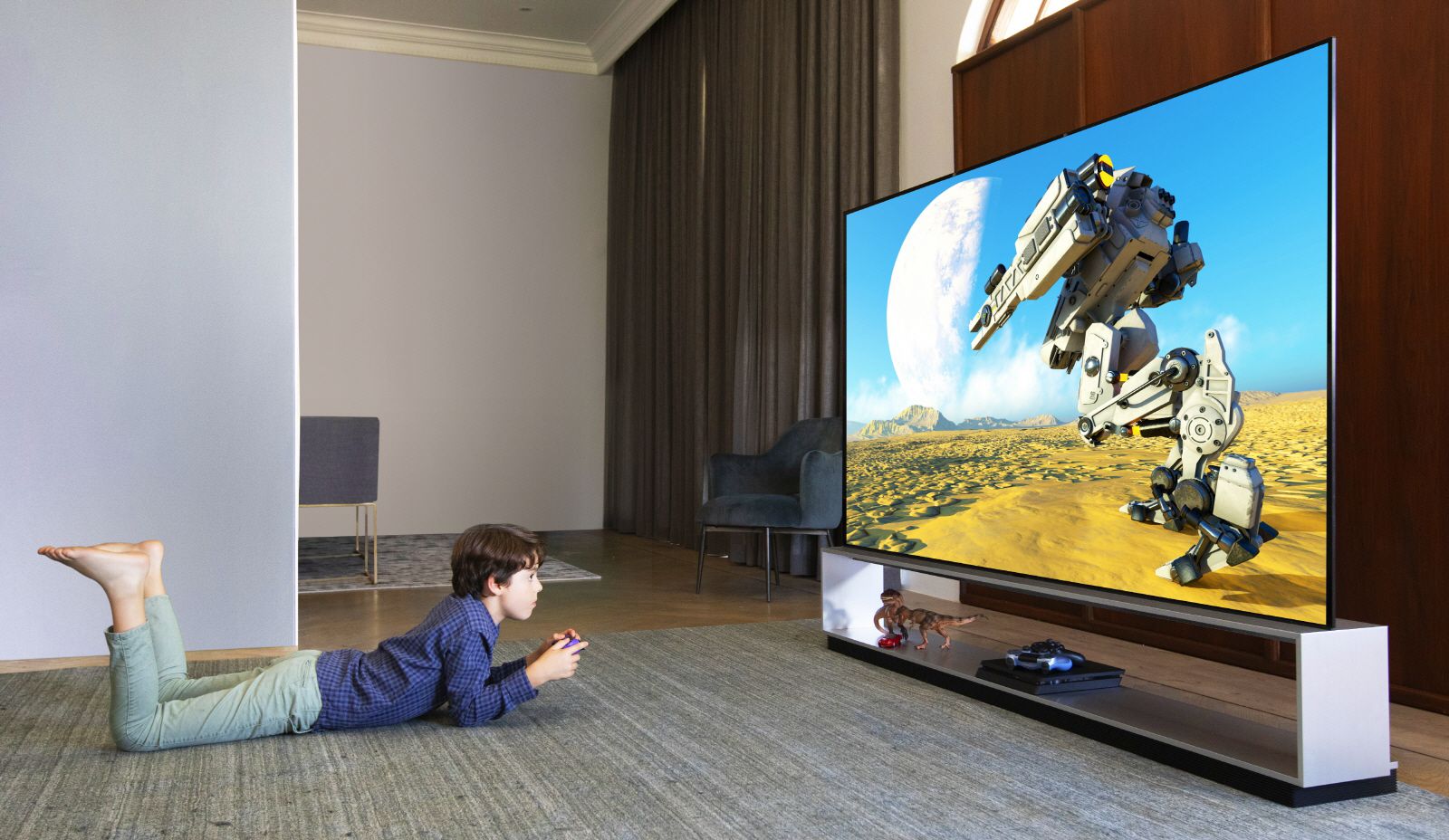LG showed up at CES 2020 in Las Vegas with a rich range of OLED TV is NanoCell able to satisfy every type of need. We are talking about OLED panels with the ZX, RX, WX, GX, CX and BX series and the NanoCell with the Nano99, Nano97, Nano95 (8K) and Nano85, Nano80 (4K) series. The new year of the Korean manufacturer therefore opens in the name of Real 8K and a redefinition of design that favors elegance, with particular attention to the size of its TVs: in addition to the frames reduced to the minimum terms of the new Gallery series and the magic of the Rollable TV, LG has unveiled the first 48-inch OLED TV , ready to challenge market conventions.
The company led by Koo Kwang-mo then proved sensitive to the needs of gamers and thanks to the partnership with NVIDIA has implemented support for G-Sync on new products.
8K and 4K OLED: between design and performance

All of LG's new production for 2020, with the exception of the ZX series, will be equipped with WRGB panels with Ultra HD resolution. The ZX range will instead have an 8K resolution with optimized displays. The heart of the new LG TVs will be based on the image processor Alpha 7 Gen AI Processor third generation for the BX series, while all the others will be fitted with the best performing Alpha 9 Gen AI Processor, with some particular boosts foreseen for the management of the 8K in the ZX series. The Korean giant, like other competitors, has also chosen to take the path of deep learning to improve the quality of the images: AI Picture it will improve color reproduction and sharpness thanks to processors capable of distinguishing and analyzing objects on the screen, processing each frame and managing the various settings based on the type of content being viewed.
In the same way, the sound sector will be managed by theAI Sound Enhancement, technology capable of managing audio by recognizing the sound source and intervening on the parameters based on the context.

All models will be equipped with HDMI 2.1 and will provide support for HDR10, HLG and Dolby Vision formats. An interesting novelty is the addition of the new one Dolby Vision IQ, an algorithm developed by Dolby that is able to use dynamic metadata and compare them with those coming from the brightness sensor integrated in TVs, so as to optimize images based on ambient light conditions.
All the OLEDs will then be compatible with the HEVC, VP9 and AV1 codecs via HDMI, via streaming and USB, as well as with the new Filmmaker Mode which was born thanks to the collaboration with the Hollywood directors and which promises to give the most faithful visual experience possible to the original intentions.

Specifically, the series OLED BX it will consist of a 55 '', a 65 '' and a 77 '' all with Apha 7 Gen 3 AI Processor and will represent the "entry level" proposal with a simplified design. OLED CX will be available in 48 '', 55 '', 65 '' and 77 '' sizes and Alpha 9 Gen 3 AI Processor. OLED GX it will be the real novelty of the 2020 range thanks to the design called "Gallery" and a thickness of only 20 millimeters which will allow installation flush with the wall, in the 55 '', 65 '' and 77 '' cuts, all Ultra HD. The OLED WX of the Wallpaper series, accompanied by an external soundbar, will be available in sizes of 65 and 75 inches.
OLED RX will finally introduce the rollable display (postponed in 2019) with Ultra HD resolution and the only 65-inch cut. To finish the LG flagship, OLED ZX, the new 8K series available in two cuts of 88 and 77 inches with Gallery Design, Alpha 9 Gen AI Processor and support for Dolby Vision IQ.
Gaze at gaming

LG has proven to be the manufacturer most attentive to the needs of gamers: thanks to the collaboration with NVIDIA, the BX, CX, GX and ZX series will offer full support to NVIDIA G-Sync, allowing players to synchronize the framerate of their sources with the refresh rate of the TV. Obviously it will be possible to exploit also AMD FreeSync (already present in previous versions) and the more generic Variable Refresh Rate. LG has also implemented the HGiG mode, an acronym for HDR Gaming Interest Group, a standard developed to ensure the correct display of HDR titles created to solve the problems that have emerged in past generations.

Not just OLED


LG renews the offer of LCD televisions with the NanoCell series 2020. The new range will have HDMI 2.1 inputs with support for HDR10, HLG and Dolby Vision formats, as well as compatibility with Dolby Atmos for the audio sector. The panels used will be IPS type LCDs with 4K Ultra HD and 8K resolutions. Nano 80 and Nano85 will be equipped with Alpha 7 Gen 3 AI Processor while Nano90, Nano95, Nano97 and Nano99 will be able to count on the power of the Alpha 9 Gen 3 AI Processor.
Also in this case, the TVs will provide support for FreeSync, Filmmaker Mode, HGiG format and in the case of the flagship products, namely Nano97 and Nano99, also of Dolby Vision IQ. These latest models will also offer displays Full LED Local Dimming (which in the case of the Nano99 will become Local Dimming Pro). More information on prices, European release dates and specifications will arrive in the coming weeks.
















